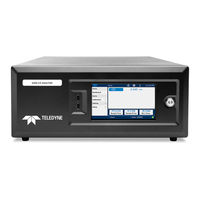TELEDYNE API N300M Gas Filter Analyzer Manuals
Manuals and User Guides for TELEDYNE API N300M Gas Filter Analyzer. We have 1 TELEDYNE API N300M Gas Filter Analyzer manual available for free PDF download: User Manual
TELEDYNE API N300M User Manual (140 pages)
CO Analyzers
Brand: TELEDYNE API
|
Category: Measuring Instruments
|
Size: 18 MB
Table of Contents
Advertisement
